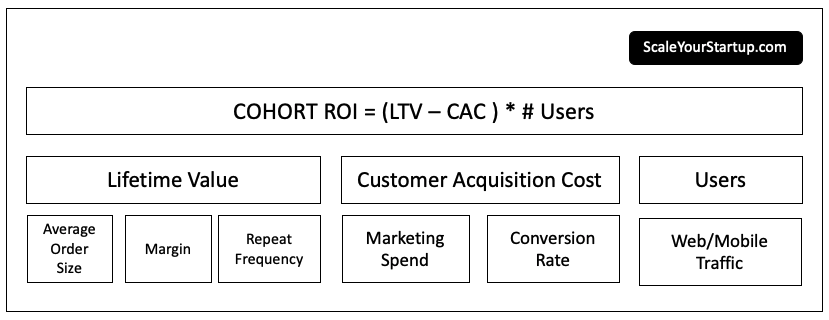As startups grow, natural divides can grow between different departments or teams.
Ignoring these problems can hamper growth. So, how do you proactively solve?
No need to reorganize the team, change P&L responsibility or update incentives.
Create a North Star metric.
A North Star metric is a goal that many departments or teams are working toward. Those teams need to understand how they each contribute to that goal.
Here’s an example for how to align product and marketing:

A marketing team wants to grow web traffic using SEO. This requires more text on a page. A product team wants to improve conversion rates. This requires simplifying the page including less text. The SEO Manager and Product Manager feel those goals are at odds based on page layout. What do you do?
First, set a North Star metric of “Cohort ROI” for the company. This means maximize profits for a given subset of customers.
Next, compare the impact on Cohort ROI of increasing users via more SEO web/mobile traffic and improving customer acquisition costs by improving conversion rates. One model for doing this is a RICE model. If you need more data as a model input, run a test.
Finally, all else equal, move forward with the lever that has a bigger impact.
To solve alignment across scaling teams, use these three steps:
- Align on a North Star metric, clarifying how each team’s lever impacts the metric
- Rank trade offs, based on which lever, strategy or tactic best helps get there
- Decide and execute
That’s it.